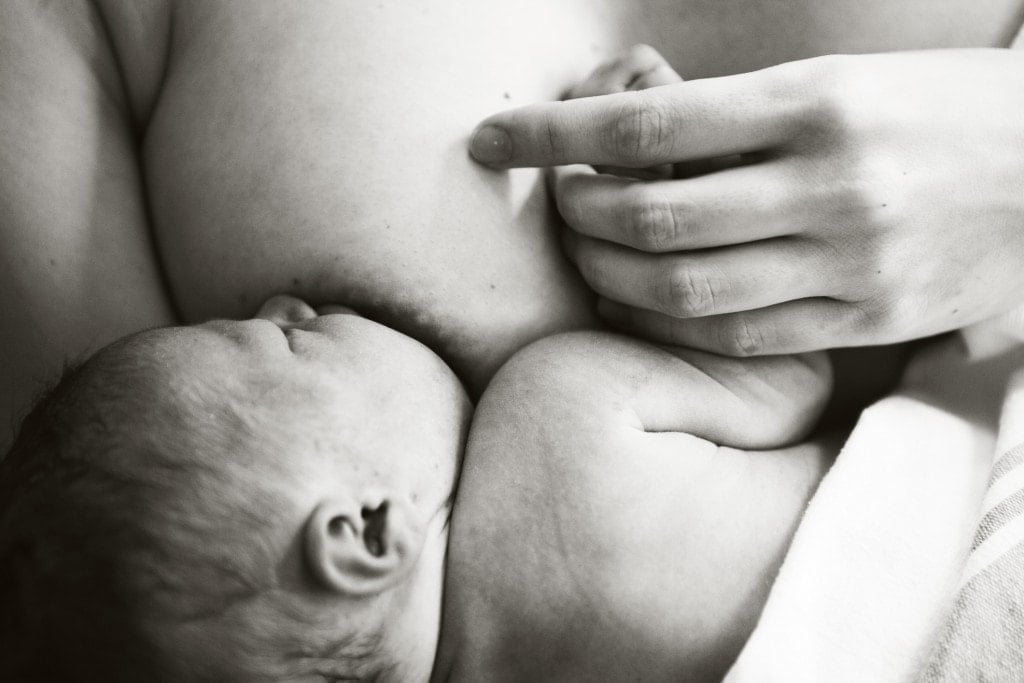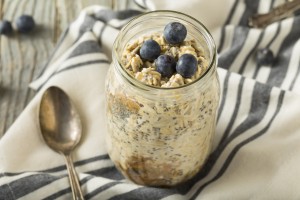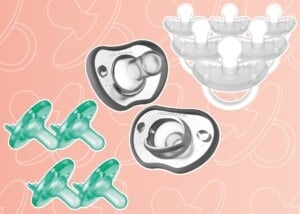When I think about clogged milk ducts, the first thing that comes to mind is when my milk first came in with my baby, and I looked like I had breast implants. Not only did I have massive breasts, but they also felt lumpy and hard all over! It was like an instant breast augmentation that went wrong.
Welcome to the world of breastfeeding! This was the first of quite a few occasions during the years of breastfeeding where I had clogged ducts. So what is the deal with clogged ducts? And do they always turn into mastitis?
How do milk ducts get clogged anyway?
Simply put, clogged milk ducts happen within your glandular breast tissue, where the milk is made and stored.3 Breastmilk can start to collect on the inside of these ducts, and this little collection of milk is referred to as a plugged, clogged, or blocked duct. You can feel them in your breast, and our usual instinct is to massage them out (which is very effective, but more on that later).
Mastitis is when a clogged duct has turned into an infection OR has caused inflammation within that glandular tissue. The blocked duct is the early stage, though; not everyone with a clogged duct will end up with mastitis. If you do all of “the things,” you will likely be able to prevent it from turning into mastitis and avoid antibiotics.
What To Do If You Have Clogged Milk Ducts
Research shows that frequent and effective removal of milk, massage, and rest are just some things that help clear clogged ducts.1 The following are my suggestions for healing and preventing clogged ducts. If you do everything together every day, you will have much better results than if you pick one or two and do them occasionally.
KEEP BREASTFEEDING!
If your baby is effectively and efficiently breastfeeding and removing the milk well, then the most important thing to do is keep on breastfeeding! Start with the affected side every time you feed. If someone has told you to pump, this is only necessary to do if your baby is not removing the milk well or if your baby won’t frequently breastfeed enough (aim for every 2-3 hours during the day and every 3-4 overnight).
Try Massage
Massaging your breasts is one of the most important steps to clearing clogged ducts. The key to this is doing it frequently, every 2 hours during the day, and whenever you’re awake long enough overnight! This helps prevent the milk from collecting on the inside of the ducts. Just gentle massage is fine, in small circular motions on all areas of the breasts. Sometimes using some oil can help make this easier.
Apply a Hot and or Cold Compress
This is an interesting topic that is often argued about, even among healthcare professionals. There is no right or wrong. Use whatever feels best! The only advice I’d give about this is to try using heat before a feed and cold after. Heat allows the milk to flow easier and encourages a letdown, while the cold after a feeding will help reduce any swelling and can also be very soothing.
Try Different Breastfeeding Positions
Your baby’s chin will be the area where the strongest part of the suck is. Changing your baby’s breastfeeding position, so their chin is in different areas of the breast will help drain the glandular tissue better. One position that I have found works well for many women is called the “dangle feed.” You will feel like a cow, but you’ll feel the difference! To do this, get on all fours and feed your baby as they lay down under you. I did this with my youngest boy when I had mastitis, and I could feel the milk draining. The help of gravity made an immediate difference and helped get everything out.
Get Some Rest
I know. This suggestion is annoying. Really annoying! Because none of us have time to rest. However, there are different ways to rest that do not involve taking a 20-minute nap. Leave the washing, leave the dishes, leave the cleaning, and just STOP. Lay down with your baby and rest. It will make a huge difference, even if it’s just for 10 minutes. While it might not clear a clogged duct, it will help prevent mastitis.
Good Vibrations
There are anecdotal reports of women who have had a lot of success removing clogs using vibration. You can do this with an electric toothbrush or a vibrator. Yup! I said it! You might as well dust off the ‘ol vibrator and use it for a different purpose. The vibration helps to break up any milk that is stuck and helps to clear the milk plugs.
Have you had clogged ducts or mastitis more than once? Are you worried about your baby’s latch? It’s important to seek help from an International Board Certified Lactation Consultant (IBCLC). You can find one here. Some women continue to have bouts of clogged ducts and/or mastitis because their baby is not effectively removing the milk. Some milk continues to pool in certain parts of the glandular tissues, leading to ongoing challenges. There are many possible causes of this, including tongue-tie, sleepy baby (due to jaundice, etc.), and prematurity. An IBCLC can help you get to the bottom of why you are experiencing recurrent blockages.













